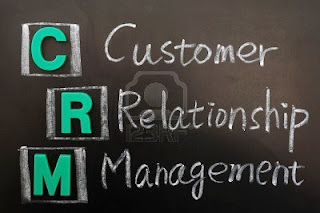Assalamualaikum..!olla
everyone..! This time I would like to post new entry about new chapter in IT
which is STRATEGIC INITIATIVES FOR IMPLEMENTING COMPETITIVE ADVANTAGES.
In this chapter it
introduces high-profile strategic initiatives that an organization can
undertake to help it gain competitive advantages and business efficiencies. It
including :
Ø Supply
chain management (SCM)
Ø Customer
relationship management (CRM)
Ø Business
process reengineering (BPR)
Ø Enterprise
resource planning (ERP)
SUPPLY
CHAIN MANAGEMENT (SCM)
SCM involves the
management of information flows between and among stages in a supply chain to
maximize total supply chain effectiveness and profitability.
There are 4 basic of
SCM include:
# Supply chain strategy- strategy
for managing all resources to meet customer demand.
# Supply chain partner- partners
throughout the supply chain that deliver finished
products,
raw materials, and services.
# Supply chain operation-
schedule for production activities.
# Supply chain logistics- product delivery
process.
Effective
and efficient supply chain management systems:
·
Decrease the power of its buyer.
·
Increase its own supplier power.
·
Increase switching costs to reduce the threat
of substitute products or services.
·
Create entry barriers thereby reducing
the treat new entrants.
·
Increase efficiencies while seeking a
competitive advantage through cost
leadership.
CUSTOMER RELATIONSHIP
MANAGEMENT (CRM)
CRM
involves managing all aspects of customer‘s relationship with an organization
to increase customer loyalty and retention and an organization’s profitability.
CRM
allows an organization to gain customer’s shopping and buying behaviors to
develop and implement enterprise wide strategy.
Customer
can contact an organization through various type of technology such as:
§ - Call
centers
§ -Web
access
§ -Email
§ -Faxes
§ -Direct
sales
That
provide access to CRM information within different system from
- Accounting system
- Order fulfillment system
- Inventory system
- Customer service system
Then,
CRM allow us to:
-
Communicate effectively with each
customer.
-
Understand customer product and service.
CRM
is not just technology but also a strategy an organization must embrace on an
enterprise level.
Implementing
a CRM system:
#
Help an organization identify customer #
To treat customer as an individual
#
Design specific marketing campaign # Understand customer
buying behaviors
BUSINESS PROCESS REENGINEERING (BPR)
-A
business process is a standardized
set of activities that accomplish a specific task, such as processing a
customer’s order
Then,
what is business process reengineering?? Business
process reengineering (BPR) is the analysis and redesign of workflow within
and between enterprise.
Finding
opportunity using BPR
v A
company can improve the way it travels the road by moving from foot to horse
and then horse to car.
v BPR
looks at taking a different path, such as an airplane which ignore the road
completely.
Other
examples:
Progressive
Insurance Mobile Process
7 PRINCIPLES OF BUSINESS PROCESS REENGINEERING
ENTERPRISE RESOURCE PLANNING (ERP)
ü Enterprise resource
planning (ERP) – integrates all
departments and functions throughout an organization into a single IT system so
that employees can make decisions by viewing enterprise wide information on all
business operations
ü Keyword in ERP is “enterprise”
|





















